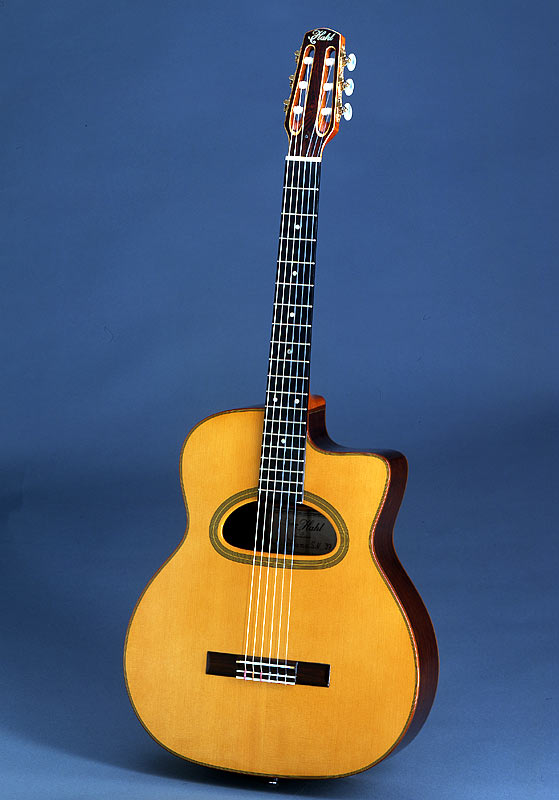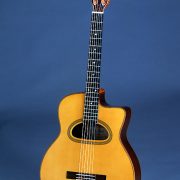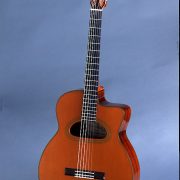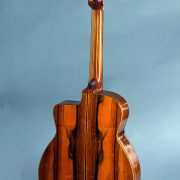Gitano Classic de Luxe
An excellent classical guitar packaged in an innovative design.
Built with a body that bears obvious similarity to Maccaferri models and boasts a specially designed interior construction, this classical concert guitar offers artists unexpected sound and performance.
Mario Maccaferri, a classical virtuoso guitarist in his time, designed a classical concert guitar with the same construction and it met his high standards. The Gitano Classic is a modern guitar that incorporates all of today’s guitar making knowledge with regards to tone aesthetics, volume, projection and playability. It is available with both the common neck dimensions of 52/62 mm as well as with a thinner neck, depending on the artist’s specific requirements.
Key features:
- Master grade class red cedar or spruce top
- D-shaped sound hole
- Rosewood back and sides
- Ebony fingerboard, available with 24 frets! (full 4 octaves)
- Medium gauge frets
- Bone nut
- Cutaway construction provides easy access to higher notes
- Brazilian rosewood bridge with bone inlays is glued to the top
- Common classical guitar neck width 52 mm at the top and 62 mm at the heel
- Optional neck width of 48 and 58 mm
- Class A high gloss finish
What the guitar press has to say
Gitano Swing Classic and Gitano Classic de Luxe
“Akustik Gitarre”, Issue 6/99, test report by Wolfgang Niemann
“In terms of sound and playability, Maccaferri’s design is without doubt a true pleasure to play. Both guitars sit perfectly balanced on the legs. Both necks fit the hand well. Both instruments respond quickly with little effort, resound long and feature delicate overtones mixed into the tonal picture for a most pleasant, refreshing color palette. Sensitivity and dynamics are attributes that distinguish both guitars. Both guitars are examples of top-flight lutherie with impressive combinations of the finest tonewoods, finishes and artistic craftsmanship. Someone for whom the classical nylon string guitar is too traditional, or someone looking for new tonal expressivity might just find it very interesting to delve deeply into the potential offered by these guitars.”




